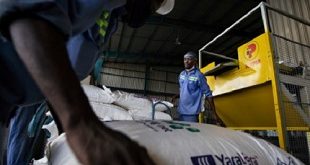
By Patrick Kagenda
When long-distance truck drivers went on strike in protest against the poor state of the Malaba Border Post parking yard on October 20, the government left the Uganda Revenue Authority to resolve it. It did not work.
On October 28, President Yoweri Museveni passed Malaba on his way to Nairobi, Kenya and demanded an explanation from URA boss Allen Kagina, and the area Resident District Commissioner.
Two days later, motorists across the country scampered to filling stations as fuel stocks ran out causing queues and a spike in pump prices from Shs 2,500 to Shs 2,800 per litre. Once again Uganda had proved vulnerable to a fuel crisis resulting from a minor glitch in the supply chain.
Uganda today consumes 2 million litres of fuel per day, 1.2 million litres of diesel 600,000 litres of petrol and 200,000 litres of kerosene. Under the petroleum act 2003, oil importers are required to keep reserves of up to ten days worth of fuel in storage facilities. Without reserves, Uganda needs an uninterrupted supply through Kenya.
But earlier in January, when Kenya erupted in post-election turmoil and fuel scarcity almost grounded the Uganda economy, the permanent secretary to the ministry of energy Mr. Fred Kabagambe Kallisa told TheIndependent that storage of refined oil is not a good strategy for fuel security.
Kaliisa, who is Uganda’s fuel expert, said plans for investment in more storage were abandoned when Uganda discovered oil.
At that time Uganda’s minister for energy Daudi Migereko said government had finalisd arrangements with the Tanzanian government to ship fuel through Manza port on Lake Victoria and by railway.
Kaliisa added that Uganda was negotiating with Tanzania about building a pipe line from Dar es Salaam to Kampala. He also said Uganda was planning an internal pipeline from Eldoret to Jinja storage facilities. The pipeline would then go from Kampala –Fort-portal road six kilometers from Nateete. Plans for this pipeline were first announced in 1999. A formal agreement was signed between Kenya and Uganda in October 2002 and construction was set to begin April 2002 over a four years period under the auspices of EAC. The pipeline would cost $ 80 million. To date nothing has happened.
Meanwhile, whenever there is a minor glitch in supply, prices shoot up and the government panics for short-term explanations instead of long-term solutions..
According to Energy minister, Daudi Migereko the October fuel shortage was caused by “exchange rate, transport and insurance premium issuesâ€.
This happened when world oil prices were collapsing. While this should have resulted in lower pump prices, oil companies are saying they are holding stocks procured at the higher international prices of July when oil closed at $147 a barrel. The impact of the decrease in world prices was more than offset by the 21 % depreciation of the Uganda shilling that hit a 12 month low average at about Shs 2,000 to the US dollar.
Petroleum products for Uganda are imported from the Arab Gulf, and transported by sea to Mombasa and transited through Kenya by a combination of pipeline, railway and trucks. Increased piracy around the gulf of Eden has been of negative development which has pushed costs of delivering petroleum products upward and has resulted in higher insurance premium being levied. Some ships are now hiring security escorts.
The other problem is the capacity constraint on the Kenya pipeline which has persisted. Much as the Pipeline authorities are carrying out repairs and capacity enhancement. The work is not yet completed. The pipeline cannot deliver sufficient volumes of fuel and therefore oil companies are forced to lift some of the fuel mainly by road and to a limited extent by rail, which are more expensive modes of transportation.
Implementation of the regulation limiting trucks to maximum of three axles by Kenya with effect from October has meant trucks must carry less volumes of fuel, pushing up the unit cost per litre delivered. Besides many transporters are still modifying their fleets to meet this requirement.
All these bottlenecks and the effects of the strike by the truck drivers at Malaba border would not have been so severe if the government had a long-term solution.
 The Independent Uganda: You get the Truth we Pay the Price
The Independent Uganda: You get the Truth we Pay the Price


